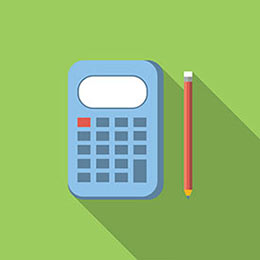Four Common Myths about the Federal Reserve
To some, the Federal Reserve can seem shrouded in mystery. Is it part of the federal government or set up like a private corporation? (Technically, both.) Is there gold inside the vault? (Very little, if any, depending on which Reserve bank.)
With its complex structure and long history, it’s easy to see how myths can get started about the Fed and its role. Here are some of the more common examples of Fed fiction, along with the real story.

Thinkstock/JuliarStudio
Myth #1: The Fed is not audited.
Truth: The Fed is audited extensively.
Transparency and accountability are priorities for the Fed. The Board of Governors in Washington, D.C., and the 12 regional Reserve banks are subject to internal and external audits, including audits by the U.S. Government Accountability Office.
In 2017 alone, internal auditors spent 29,481 hours reviewing St. Louis Fed operations. The Fed also reports regularly to Congress through hearings, reports and reviews. You can view the St. Louis Fed's most recent financial statements in our annual reports.
Learn more about how the Fed is audited.

Thinkstock/JuliarStudio
Myth #2: The Fed is controlled by the government or Wall Street.
Truth: The Fed is an independent and nonpartisan organization, accountable to the American people.
The Federal Reserve System is not "owned" by anyone. The Fed derives its authority from Congress via the Federal Reserve Act of 1913. This central banking system blends public and private characteristics.
- The Board of Governors is an agency of the federal government and oversees the 12 Reserve banks.
- The Reserve banks are organized similarly to private-sector corporations, each operating within its own particular geographic area and separately incorporated with its own board of directors. The regional banks, including the St. Louis Fed, were designed to represent the voice of Main Street.
Understand the Fed’s structure with In Plain English: Making Sense of the Federal Reserve.

Thinkstock/JuliarStudio
Myth #3: The Fed owns and stores gold.
Truth: The Fed does not own gold and only stores a very small amount of the U.S. Treasury’s gold.
The Fed does not own gold. The Gold Reserve Act of 1934 required the Fed System to transfer ownership of all of its gold to the Department of the Treasury.
According to the Status Report of U.S. Government Gold Reserve, issued by the Treasury’s Bureau of the Fiscal Service, the Treasury currently owns roughly $11 billion worth of gold reserves in book value (as of April 30). About 5 percent, approximately $568 million, is held in custody at Reserve banks, almost all of it in the vault at the New York Fed. A very small portion is on display in several other Reserve banks.
The remaining 95 percent of U.S. Treasury gold (approximately $10.4 billion in book value, according to the April 30 report) is held in custody for the Treasury by the U.S. Mint, with most of it stored at the United States Bullion Depository—often known as Fort Knox in Fort Knox, Ky.—and smaller amounts at the Mint’s Denver facility and its West Point facility in New York.
Get the scoop on gold with "Here’s Why the U.S. No Longer Follows a Gold Standard."

Thinkstock/JuliarStudio
Myth #4: Inside the Fed, employees are busily printing money.
Truth: The Fed does not print money (coin or currency).
The Fed doesn’t actually print or produce coins or currency in any form. Coins come from the U.S. Mint, and paper currency comes from the Treasury’s Bureau of Engraving and Printing. The Fed does, however, distribute currency to banks after it is printed. And on the other end of the currency lifecycle, Reserve banks remove from circulation bills that are too worn or old. They also play a role in flagging potential counterfeit currency; last year, 3,041 suspected counterfeit notes were withdrawn from circulation, thanks to the St. Louis Fed’s efforts.
The Fed also has the ability to change the supply of money in the economy by using its policy tools to alter the monetary base. One of these tools is open market operations, in which the Fed buys or sells U.S. Treasury securities on the open market. The Fed pays for these by crediting funds to the reserves that banks are required to hold. Doing so can influence how much banks are willing to lend, which in turn determines the volume of bank deposits held by the public.
Read more about how this works in Does the Federal Reserve Print Money?
This blog explains everyday economics and the Fed, while also spotlighting St. Louis Fed people and programs. Views expressed are not necessarily those of the St. Louis Fed or Federal Reserve System.
Email Us


